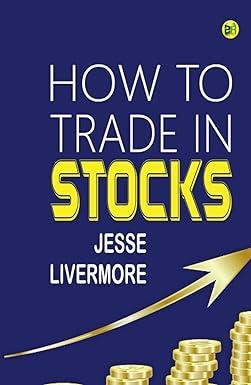Question
MC Questions 1A - 1C ... Geometric Returns, Unit Values, Arithmetic Returns, and Standard Deviations The following 8 questions refer to the follow returns for
MC Questions 1A - 1C ... Geometric Returns, Unit Values, Arithmetic Returns, and Standard Deviations
The following 8 questions refer to the follow returns for stocks for the first ten years of the century. These are total rate of returns; that is, both income and price. For example, the total rate of return for 2001 was a negative 11.85%.
Question 1A) If you invested $1.00 at the beginning of the time frame [1/1/2001], how much would your dollar be worth five years [5] later; that is, on 12/31/2005? Hint: Calculate your unit values.
| Total | |
| Year | Return |
| 2001 | -11.85% |
| 2002 | 3.97% |
| 2003 | 28.36% |
| 2004 | 10.74% |
| 2005 | 6.83% |
| 2006 | 15.61% |
| 2007 | 8.48% |
| 2008 | -36.55% |
| 2009 | 23.94% |
| 2010 | 21.00% |
Select one:
a. $1.10 to $1.20
b. $1.40 to $1.50
c. Less than $1.00
d. More than $1.60
e. $1.00 to $1.10
f. $1.50 to $1.60
g. $1.30 to $1.40
h. $1.20 to $1.30
Question 1B)
How much would your initial dollar investment be worth at the end of year 10; that is, on 12/31/2010?
Select one:
a. $1.40 to $1.50
b. More than $1.60
c. Less than $1.00
d. $1.00 to $1.10
e. $1.50 to $1.60
f. $1.20 to $1.30
g. $1.30 to $1.40
h. $1.10 to $1.20
Question 1C)
What was your Geometric Average Return [Fidelity calls them "Average Annual Returns"] for the five [5] years ending 12/31/2005 [Hint: Use the unit value that you calculated earlier.].
Select one:
a. 1.00% to 2.00%
b. 2.00% to 3.00%
c. 0% to 1.00%
d. 3.00% to 4.00%
e. More than 8.00%
f. Negative
g. 4.00% to 5.00%
h. 5.00% to 6.00%
i. 6.00% to 7.00%
j. 7.00% to 8.00%
Question 1D)
What was your Geometric Average Return [Fidelity calls them "Average Annual Returns"] for the ten [10] years ending 12/31/2010 [Hint: Use the unit value that you calculated earlier.].
Select one:
a. 0% to 1.00%
b. 1.00% to 2.00%
c. Negative
d. 2.00% to 3.00%
e. 6.00% to 7.00%
f. 7.00% to 8.00%
g. 3.00% to 4.00%
h. 4.00% to 5.00%
i. More than 8.00%
j. 5.00% to 6.00%
Question 1E)
What was your Arithmetic Average Return for the five [5] years ending 12/31/2005?
Select one:
a. 0% to 1.00%
b. 7.00% to 8.00%
c. More than 8.00%
d. 2.00% to 3.00%
e. 3.00% to 4.00%
f. 5.00% to 6.00%
g. Negative
h. 4.00% to 5.00%
i. 6.00% to 7.00%
j. 1.00% to 2.00%
Question 1F)
What was your Arithmetic Average Return for the ten [10] years ending 12/31/2010?
Select one:
a. 2.00% to 3.00%
b. 5.00% to 6.00%
c. 4.00% to 5.00%
d. 6.00% to 7.00%
e. 1.00% to 2.00%
f. 7.00% to 8.00%
g. More than 8.00%
h. 0% to 1.00%
i. Negative
j. 3.00% to 4.00%
Question 1G)
What was the Standard Deviation of Returns for the ten [10] years ending 12/31/2010?
Select one:
a. More than 40%
b. 20% to 25%
c. 30% to 40%
d. 10% to 15%
e. 15% to 20%
f. 5% to 10%
g. 25% to 30%
h. 0% to 5%
Question 1H)
Assume that stock returns are normally distributed. Use the 10-year standard deviation that you just calculated.
Approximately, what range of returns would you expect 68% of the time for any given year?
Select one:
a. Between a loss of 10% and a gain of 25% [that is, -10% < X < 25%]
b. Between a loss of 30% and a gain of 45% [that is, -30% < X < 45%]
c. Between a loss of 20% and a gain of 20% [that is, -20% < X < 20%]
d. Between a loss of 10% and a gain of 10% [that is, -10% < X < 10%]
e. Between a loss of 5% and a gain of 18% [that is, -5% < X < 18%]
Step by Step Solution
There are 3 Steps involved in it
Step: 1

Get Instant Access to Expert-Tailored Solutions
See step-by-step solutions with expert insights and AI powered tools for academic success
Step: 2

Step: 3

Ace Your Homework with AI
Get the answers you need in no time with our AI-driven, step-by-step assistance
Get Started


